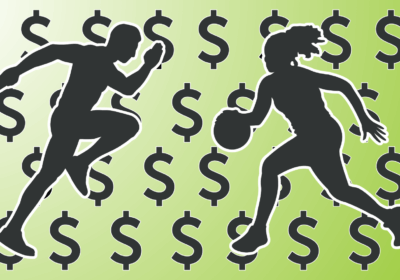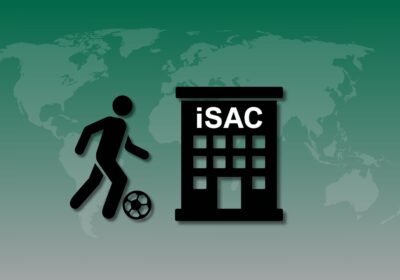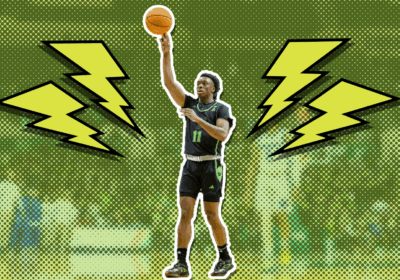OPINION: The 2021 NCAA women’s basketball tournament was the most important of all time

A year after both the men’s and women’s NCAA tournaments were postponed due to the rising threat of COVID-19 in the U.S., no one knew what to expect from the tournament’s 2021 edition. Health concerns and a tournamentwide bubble were just a few of the unknowns in play over the course of the three-week event.
With the women’s tournament now behind us following Stanford’s thrilling 54-53 win over Arizona in the championship game Sunday, there is one clear takeaway: This year’s women’s tournament will likely go down as the most important one ever in terms of pushing the game to unprecedented heights.
There were so many monumental moments, discussions and milestones during the three weeks in San Antonio that changed, and will continue to change, the way the women’s game is seen moving forward.
That change began before a single game was even played.
Three days before the tournament’s opening game, Oregon forward Sedona Prince posted a video on her TikTok and Twitter account showing the enormous disparity between the men’s and women’s weight rooms at the respective tournaments.
While the men’s tournament had a high-level gym facility, loaded with racks, bench presses and a bunch of other amenities, according to the video, the women were given a single “rack” of weights and a few sanitized yoga mats. Prince also called out the NCAA on the lies about the lack of space there was in the facilities.
“Now when pictures of our weight room got released versus the men’s, the NCAA came out with a statement saying that it wasn’t money, it was space that was the problem,” Prince said before she showed the ballroom-sized empty space where workout equipment could’ve been put.
The statement that Prince is referring to was made by Lynn Holzman, NCAA vice president of women’s basketball.
“Some of the amenities teams would typically have access to have not been as available inside the controlled environment,” Holzman said. “In part, this is due to the limited space and the original plan was to expand the workout area once additional space was available later in the tournament.”
Prince posted several other videos showing the dichotomy in what the two tournaments ate, the swag bags they received and several others, she went on to draw a line in the sand at the end of the original video.
“If you aren’t upset about this problem, then you are a part of it,” Prince said.
The original ultimately went viral, receiving 17.6 million views and creating mass outrage toward the NCAA about the disparities. It was one of the rare instances in which the chasm that’s existed between men’s and women’s college sports for decades was brought to light on a massive scale.
Everyone from journalists and politicians, like New Jersey Rep. Mikie Sherrill, to NBA superstars like Stephen Curry, decried the injustices of it all. Sherrill even penned a letter to President of the NCAA Mark Emmert demanding answers for all of the inequalities displayed between the two tournaments.
Within 24 hours of the first video being posted, Dick’s Sporting Goods announced it would be sending truckloads of workout equipment to the women’s bubble. The gym was set up by noon March 20.
The importance of Prince’s videos and the photos of the inequalities cannot go understated. While they demonstrated how far there is to go until there is equality and fairness in college sports, they also sparked an enormously important conversation concerning inequality that isn’t brought up every day. That conversation drove the NCAA to take action with its committee asking Emmert to open an independent investigation.
The more often these important conversations occur, the more quickly change will come — hopefully faster than most expect.
Once the games started, the historical trend continued. For the first time in the history, every single game of the women’s tournament was broadcast on a national network, being shown on all ESPN channels as well as ABC.
This unprecedented accessibility to the tournament led to new highs in ratings and overall viewership, and it wasn’t only the big-time matchups that drew a lot of eyes. The growth started from the jump of the tournament.
The first-round game between Tennessee and Middle Tennessee on ABC had the biggest audience of any women’s first-round game since 2010, with 633,000 viewers, according to an article by Sports Media Watch. The most-watched game of the first weekend was UConn versus Syracuse in the second round which drew 804,000 viewers on ESPN.
In later rounds, the numbers continued to grow. This year’s Sweet 16 averaged 915,000 viewers across the round’s eight games, which was a 66% increase compared to the 2019 tournament. The matchup between Iowa and UConn, and superstar freshmen Caitlin Clark and Paige Bueckers, drew 1.6 million viewers, the second-most for a Sweet 16 game ever and the most viewed since 2013, according to ESPN.
More impressive yet was the Elite Eight, which went up against the men’s Elite Eight on CBS. The games still averaged 1.8 million viewers each, up 6% from 2019.
This is another example of the continuous growth in popularity women’s college basketball is receiving, and ESPN’s commitment to broadcasting it speaks to how it will respond to that popularity going forward.
Perhaps the best part of all of the attention and newfound viewership that the tournament received was the unprecedented amount of dialogue that was had.
Whether it was Texas A&M’s Jordan Nixon hitting a buzzer beater in overtime to take down Iowa State in the second round or the controversial no-call on Baylor’s DiJonai Carrington at the end of their Elite Eight matchup against UConn, the women’s game was one of the leading topics of conversation on social media and some of the biggest sport networks in the country during March Madness.
WNBA superstar and UConn alumna Sue Bird said it best during a press conference with Team USA regarding the controversy.
“There’s going to be people that are going to answer this question saying ‘there was no foul,’” Bird said. “There’s going to be people that answer this question saying ‘it was definitely a foul,’ my take on it, everybody’s talking about it and that’s what matters. I turned on ‘First Take’ this morning and they were debating it, you go on Twitter, everybody has an opinion.
“And I think that, having storylines and conversations surrounding women’s basketball, even if it’s a little controversial, even if it gets a little heated, that’s good for the growth of the game.”
It’s evident that the passion for women’s basketball is growing. This tournament could be the catalyst for shifting the college sport landscape in the years to come.
University of South Carolina head coach Dawn Staley put the tournament and women’s college basketball into perspective following the team’s loss to Stanford in the Final Four.
“We put a product on the floor that if you give us a chance, you could be proud of,” Staley said. “The casual fan, the dad that likes to sit on the couch and watch sports all day, to the young to the old, when you find you a team, when you find you a women’s basketball team, and you support them in a way that you support whatever is your favorite team, you’ll find that your team is probably a pretty darn good basketball team.
“You’ll fall in love with our game, because our game is a beautiful game.”
Despite all the odds and uncertainties surrounding this season, the 2021 tournament made an unforgettable first impression, with millions falling in love and joining the game’s ever-growing fan base.







